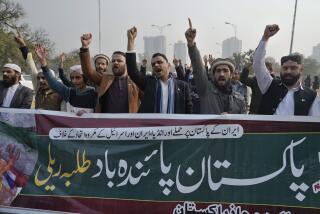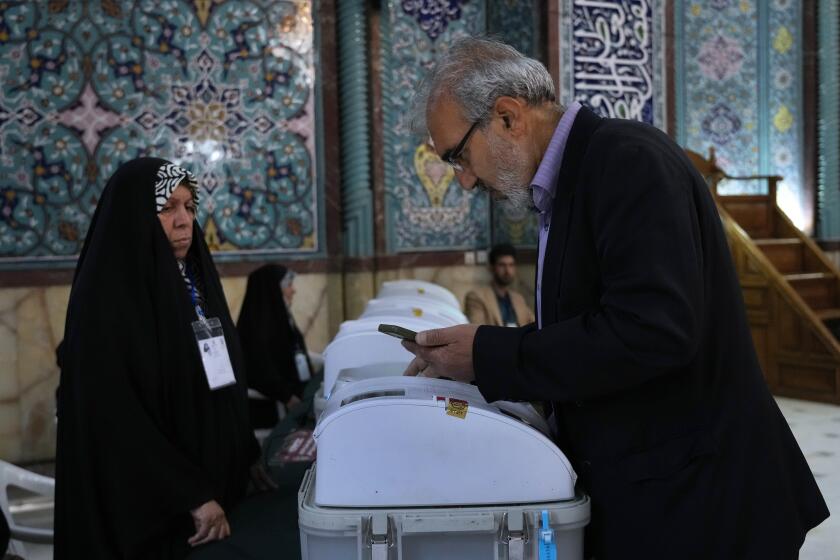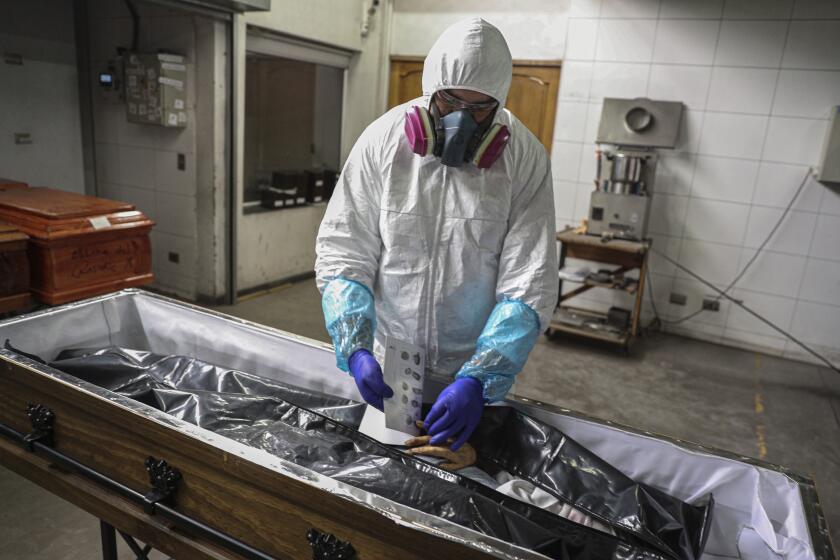Afghan militant leader reportedly killed in drone strike in Pakistan
PESHAWAR, Pakistan -- A senior commander linked to the Taliban was among six militants reportedly killed early Friday in a suspected U.S. drone strike in northwest Pakistan along the Afghan border, according to local media and an intermediary with close links to militants.
The commander, Afghan national Mullah Sangeen Zadran, has been a top leader with the Haqqani network who reportedly served as the Taliban’s unofficial governor of Afghanistan’s southeastern Paktika province, said the intermediary, who requested anonymity for his own security.
Two Jordanians, an Egyptian and two local militants linked to the Haqqani network also were reportedly hit in the suspected U.S. drone strike, he added. The network is an Islamist insurgent group operating along the Pakistan-Afghanistan border that enjoyed CIA support during the 1980s Soviet war in Afghanistan but is now allied with the Taliban fighting NATO-led forces.
Unconfirmed media reports said two missiles in the early morning hours of Friday hit and destroyed a house where the militants were staying in Dargah Mandi village in North Waziristan, a longtime haven for Taliban and Al Qaeda militants. In the past, the reported killing of top militants have sometimes turned out to be untrue.
Afghanistan has often blamed Pakistan for providing militants a haven in its mountainous northwestern border region from which they can stage attacks on Afghan territory. Islamabad has repeatedly denied any support for militancy, arguing that it is the real victim of terrorism.
Zadran, reportedly age 45, is accused of masterminding bomb and manned attacks on U.S. military bases in eastern Afghanistan, overseeing logistics for Taliban fighters and kidnapping foreign and Afghan nationals around the Pakistan-Afghanistan border. In 2011, the United States put him on its worldwide list of terrorists.
The CIA has been carrying out attacks since 2004 on lawless and inaccessible areas such as northwest Pakistan with drones, also referred to as unmanned aircraft. The strikes are highly controversial among Pakistanis, many of whom see it as a violation of national sovereignty and a de facto death sentence for civilians caught in the path of missiles.
Amajd Ali, a cloth merchant in Peshawar sipping green tea in a light blue shalwar kameez outfit, said there’s little proof the Americans hit the targets they claim. “Americans can say that militants are targeted in these attacks, but there is no independent confirmation,” he said, adding that Pakistan’s military is also to blame for quietly supporting the CIA. “Without Pakistan’s institution support, American couldn’t carry out these strikes,” he said.
A short distance away Fareedullah Khan, a Peshawar resident in his 60s, strongly agreed as he returned from the mosque holding prayer beads. “America is just trying to subjugate the world on the pretext of crushing militancy,” he said. “I believe they’re only killing innocent women and children.”
In the face of impassioned public opposition to drones, Pakistani Prime Minister Nawaz Sharif has repeatedly called for an end to their use over Pakistan airspace. The London-based Bureau of Investigative Journalism reported in 2012 that 176 children and between 472 and 885 civilians were killed by drone strikes between 2004 and late 2012, along with approximately 3,000 militants.
On Friday, the Pakistan Foreign Ministry condemned the latest strike in a statement, adding that their continued use threatens to undermine U.S.-Pakistan cooperation.
In response to growing public outrage in Pakistan and concerns that the strikes may serve as a recruiting tool for extremists, the U.S. has been reducing the number of drone attacks. President Obama said this year that the strikes were a legitimate tool against terrorism but pledged greater transparency and stricter rules on who would be targeted.
According to the New America Foundation, there were 17 reported drone strikes in the first eight months of 2013, compared with 48 in 2012, 73 in 2011 and 122 in 2010.
On a trip to Pakistan in August, Secretary of State John F. Kerry said the U.S. hoped to halt the use of drones sometime soon. “The program will end, as we have eliminated most of the threat and continue to eliminate it,” he said in an interview broadcast on state television. “We hope it’s going to be very, very soon.”
ALSO:
Obama, Putin meet at summit despite tensions over Syria
U.S. draws down diplomatic presence in Lebanon and Turkey
Iran’s Rouhani outmaneuvering hard-liners on Syria, nuclear talks
Twitter: @markmagnier
Special correspondent Ali reported from Peshawar and Times staff writer Magnier from New Delhi. Special correspondent Nasir Khan in Islamabad contributed to this report.
More to Read
Start your day right
Sign up for Essential California for news, features and recommendations from the L.A. Times and beyond in your inbox six days a week.
You may occasionally receive promotional content from the Los Angeles Times.






